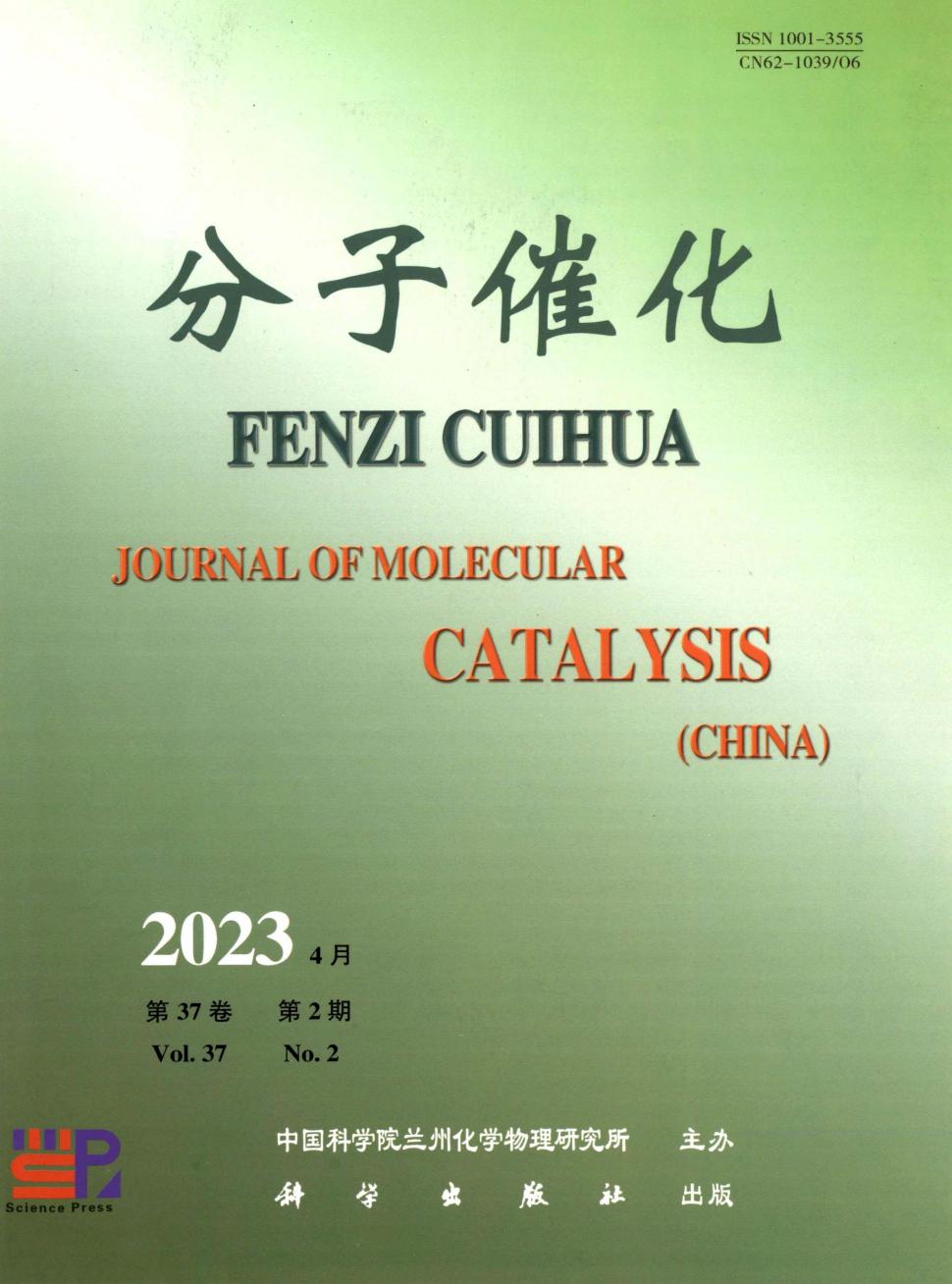Hydroformylation of 1 -aryl- 1 -(2-pyridyl) ethenes catalyzed by rhodium complexes
Q4 Chemical Engineering
引用次数: 12
Abstract
The hydroformylation of 1-aryl-1-(2-pyridyl)ethenes 1 can be accomplished in good yield (85%) using HRh(CO) (PPh3)3 with rather high catalyst to substrate molar ratios (1/80) under standard conditions. Other cobalt, platinum and rhodium complexes exhibit lower catalytic activity towards hydroformylation, the hydrogenation of the substrate being in most cases the main reaction. The formation of the more branched aldehyde 3 occurs in the presence of HRh(CO) (PPh3)3 regiospecifically. The formation of the complex 9 from [Rh(CO)2Cl]2 and olefin 1a, in which only the pyridine nitrogen is coordinated to the metal, enlightens on the role played by the heteroatom in determining both chemo- and regioselectivity of the reaction.
铑配合物催化1 -芳基- 1 -(2-吡啶基)乙烯的氢甲酰化反应
在标准条件下,使用HRh(CO) (PPh3)3,在较高的催化剂与底物摩尔比(1/80)下,1-芳基-1-(2-吡啶基)乙烯1的氢甲酰化反应收率可达85%。其他钴、铂和铑配合物对氢甲酰化表现出较低的催化活性,在大多数情况下,底物的氢化反应是主要反应。多支醛3的形成发生在HRh(CO) (PPh3)3存在的区域特异性。[Rh(CO)2Cl]2与烯烃1a形成配合物9,其中只有吡啶氮与金属配位,揭示了杂原子在决定反应的化学选择性和区域选择性方面所起的作用。
本文章由计算机程序翻译,如有差异,请以英文原文为准。
求助全文
约1分钟内获得全文
求助全文
来源期刊

分子催化
Chemical Engineering-Catalysis
CiteScore
1.50
自引率
0.00%
发文量
2959
期刊介绍:
Journal of Molecular Catalysis (China) is a bimonthly journal, founded in 1987. It is a bimonthly journal, founded in 1987, sponsored by Lanzhou Institute of Chemical Physics, Chinese Academy of Sciences, under the supervision of Chinese Academy of Sciences, and published by Science Publishing House, which is a scholarly journal openly circulated both at home and abroad. The journal mainly reports the latest progress and research results on molecular catalysis. It contains academic papers, research briefs, research reports and progress reviews. The content focuses on coordination catalysis, enzyme catalysis, light-ribbed catalysis, stereochemistry in catalysis, catalytic reaction mechanism and kinetics, the study of catalyst surface states and the application of quantum chemistry in catalysis. We also provide contributions on the activation, deactivation and regeneration of homogeneous catalysts, solidified homogeneous catalysts and solidified enzyme catalysts in industrial catalytic processes, as well as on the optimisation and characterisation of catalysts for new catalytic processes.
The main target readers are scientists and postgraduates working in catalysis in research institutes, industrial and mining enterprises, as well as teachers and students of chemistry and chemical engineering departments in colleges and universities. Contributions from related professionals are welcome.
 求助内容:
求助内容: 应助结果提醒方式:
应助结果提醒方式:


